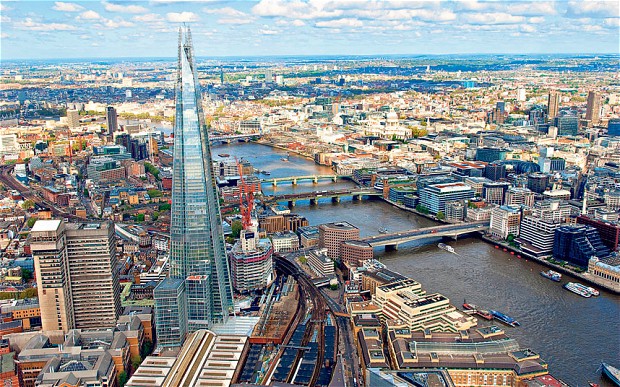Northern Ireland Is The Best Place To Start And Grow A Business
More young businesses reach £1m in sales in Northern Ireland than anywhere else in the UK
More small firms in Northern Ireland hit the “magic milestone” of £1m in revenues within their first three years in business than anywhere else in the UK.
Across Northern Ireland, the number of start-ups reaching a £1m turnover between 2011 and 2014 ranges from 9.3pc in the north, to 9.7pc in Belfast, to 10.8pc in the west and south regions, according to a new report from the independent research outfit, the Enterprise Research Centre (ERC).
“Part of the story in Northern Ireland is longstanding policy infrastructure – acommitment by government and its agencies to invest in the enterprise agenda from start-up through to growth,” said Professor Mark Hart, deputy director of ERC. “Local policy, through the Department of Enterprise, Trade and Investment (DETI) and its agency Invest NI – working with partners on the ground – seems to be making a difference.
“There is certainly a stability of policy in the Home Nations, as opposed to England, where policy can change dramatically between governments. We may be seeing the success of that stability coming through in some of the headline statistics.”
Northern Ireland’s 10pc average for firms reaching £1m in three years compares to 7.9pc of small businesses in London, and 6.2pc in England overall. Cumbrian firms have the lowest survival rates in the UK with just 2.2pc making it to the £1m mark.

London no longer gets top billing in every growth ranking, lagging begind Hertfordshire in job creation ratios
“Northern Ireland is a fantastic place to start and scale a business,” said Paul Stewart, founder of £1m-turnover, Belfast-based courier website UniBaggage.com, which transports students’ belongings to and from university around the UK and worldwide.
“Northern Ireland has low overheads in terms of rent and staffing costs but it also has a large talent pool across many disciplines. The location is well-connected to Dublin which is fast-becoming a thriving economy especially in the tech world. Belfast is also only a 1.5 hour flight away from London.”
The report, which examined data from Local Enterprise Partnerships across the UK, also found the UK’s small firms are growing at their fastest rate since 2008, and have regained the ground lost during the Great Recession, with jobs, start-up and growth rates returning to pre-crisis levels.
Last year, the small to medium-sized enterprises (SMEs) added more than 600,000 new jobs across the UK.
Growth hotspots have appeared all over the UK. While London remains the nation’s commercial centre, other cities are outpacing the capital on growth.
Hertfordshire and Buckinghamshire have the highest ratios for job creation, above London in third place.
London still boasts the highest proportion of fast-growing firms in the UK, with 18.6pc of small firms showing annual employment growth of 20pc or more between 2011 and 2014, Scotland follows close behind.
The capital ranks in the bottom 10 for survival rates, hoever, with just 54pc of start-ups lasting three years or more. Entrepreneurs in Cornwall stand the best chance of surviving their early years with 61.7pc going the distance.
Scaling up still poses a challenge for UK entrepreneurs. Just 6pc of existing firms managed to increase turnover from £1m-£2m to £3m between 2011 and 2014. Some 8.9pc of firms in Thames Valley Bershire managed to hit this milestone, with London not far off at 8.7pc.
The report found that a shortage of skilled staff, lack of a cohesive sales and marketing strategy and poor access to finance were holding fast-growth firms back.
“Small businesses in every corner of the UK are growing at their fastest rate since the Great Recession,” said Professor Mark Hart, deputy director of ERC. “More and more entreprenerus have the confidence to take the plunge.”
Proportion of start-ups in 2011 reaching £1m turnover by 2014 (%)
| Cumbria | 2.2 |
|---|---|
| East | 3.6 |
| East of Northern Ireland | 4.1 |
| Swindon and Wiltshire | 4.2 |
| Highlands & Islands | 4.3 |
| West of England | 4.7 |
| York, North Yorkshire and East Riding | 4.8 |
| Scotland | 4.9 |
| Coast to Capital | 4.9 |
| Oxfordshire | 5 |
| Leicester and Leicestershire | 5.1 |
| East Wales | 5.2 |
| Worcestershire | 5.2 |
| Heart of the South West | 5.2 |
| Tees Valley | 5.2 |
| Gloucestershire | 5.3 |
| Buckinghamshire Thames Valley | 5.4 |
| Hertfordshire | 5.5 |
| Solent | 5.5 |
| Wales | 5.5 |
| South West | 5.6 |
| South East Midlands | 5.6 |
| Stoke-on-Trent and Staffordshire | 5.6 |
| Derby, Derbyshire, Nottingham and Nottinghamshire | 5.6 |
| Cornwall and Isles of Scilly | 5.7 |
| West Wales & The Valleys | 5.7 |
| Thames Valley Berkshire | 5.8 |
| South East | 5.8 |
| Humber | 5.8 |
| New Anglia | 5.9 |
| Dorset | 5.9 |
| North Eastern | 6.1 |
| Coventry and Warwickshire | 6.1 |
| Black Country | 6.1 |
| Northamptonshire | 6.2 |
| Cheshire and Warrington | 6.4 |
| Liverpool City Region | 6.4 |
| England | 6.4 |
| Outer Belfast | 6.6 |
| Sheffield City Region | 6.8 |
| Greater Lincolnshire | 6.8 |
| Greater Manchester | 6.9 |
| Lancashire | 6.9 |
| Greater Cambridge & Greater Peterborough | 7 |
| Leeds City Region | 7.1 |
| North Eastern | 7.2 |
| Greater Birmingham and Solihull | 7.4 |
| London | 7.9 |
| Northern Ireland | 8.3 |
| North of Northern Ireland | 9.3 |
| Belfast | 9.7 |
| West & South of Northern Ireland | 10.8 |
Source: telegraph.co.uk




